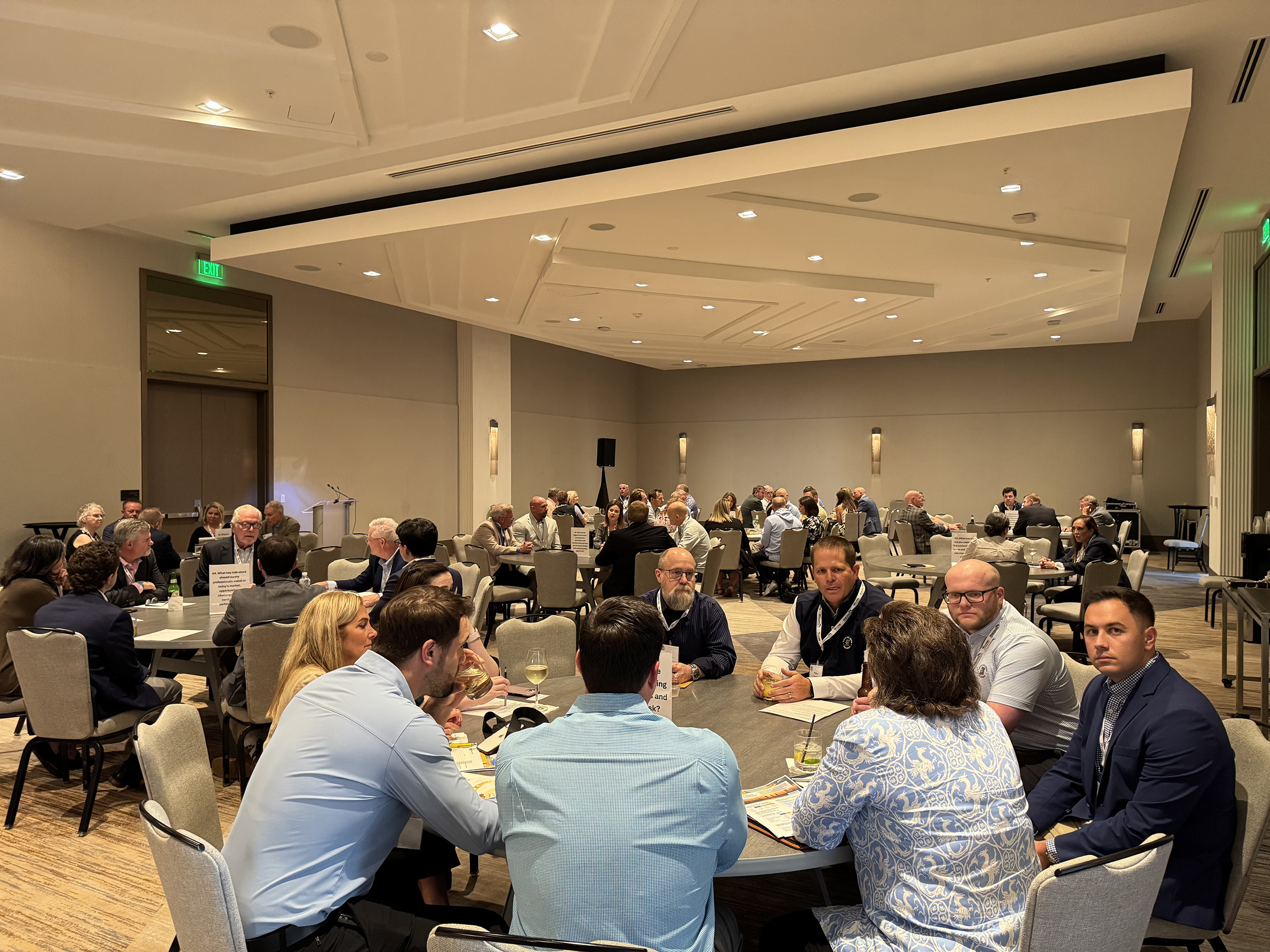
“But I Thought I Had Payment Bond Protection!”–Bond Producers and Subcontractors Should Review Miller Act Payment Bonds
We all know that a Miller Act payment bond protects persons on federal public works projects who have a contractual relationship with the prime contractor or with a subcontractor. Right? Well, not necessarily.
Federal Court Limits Payment Protection under Miller Act Payment Bond
A recent decision out of the United States District Court for the District of Nevada is a sobering reminder that bond producers and their subcontractors should obtain a copy of payment bonds and carefully review them, in order to protect themselves from anticipated payment bond protection that is just not there. In U.S. for the use of Russel Sigler, Inc. v. Associated Mechanical, Inc., Amerind Builders, LLC, and E.C. Scarborough, No. 2:09-cv-01238, 2010 WL 5100913 (D. Nev. Dec. 8, 2010), the federal district court allowed an individual surety to expressly limit the duration of a payment bond issued pursuant to the Miller Act. In this case that meant that a supplier that furnished materials in the project had no payment protection from the individual surety. The unpleasant upshot for subcontractors and suppliers on federal construction projects is that they can no longer assume that they have payment protection under a Miller Act payment bond for the duration of the project.
Just what are the facts in the Associated Mechanical case? This dispute involved a United States Air Force construction project located at Creech Air Force Base in Indian Springs, Nevada (“Project”). The Air Force hired Amerind Builders, LLC (“Amerind”) as the general contractor on the Project, and Amerind subcontracted with Associated Mechanical Inc. (“Associated Mechanical”) for a portion of the Project. Amerind obtained a payment bond from an individual surety, E.C. Scarborough (“Scarborough”), in the amount of $1,028,422.00 (“Bond”). Associated Mechanical contracted with Russel Sigler, Inc. (“Sigler”) to obtain heating, ventilation, and air-conditioning supplies for use in the Project. Sigler delivered the requested materials to the Project and invoiced Associated Mechanical $203,550.53. Associated Mechanical did not, and would not, pay Sigler. Sigler demanded that Amerind and E.C. Scarborough pay the $203,550.53 invoice, but they each refused.
Sigler commenced this action in July 2009, alleging that defendants failed to pay Sigler for services it performed on the Project. This decision by the court resulted from cross-motions for summary judgment filed by Sigler against Amerind and Scarborough and filed by Amerind and Scarborough against Sigler.
The court observed that the Miller Act, 40 U.S.C. § 3131, et seq., requires government contractors to obtain performance and payment bonds approved by the contracting officer for federal projects in order to protect those supplying labor and materials to the project. 40 U.S.C. § 3131(b). The court stated that “[t]he ultimate issue here is whether or not a surety may contractually limit the duration of a payment bond under the Miller Act.” The parties did not provide any case law directly on the subject nor did Sigler cite any statutory language that stated a bond cannot be of limited duration.
Sigler argued that a Miller Act bond cannot be time limited and that allowing a surety to limit the duration of a bond to less than the actual project length would impede the purpose of the Miller Act to protect all subcontractors and suppliers to a federal project. Sigler further argued that, if the Bond did expire, then Amerind violated the Miller Act by not providing a second bond on the Project after the Bond expired. The Defendants argued that there is no language in the Miller Act that prevents a bond from expiring, time limitation are permitted, the bond was time limited, and Sigler’s claim fell outside the Bond’s effective period.
The court reviewed persuasive authority on bond expiration issues. The court cited with approval U.S. for the use of Modern Electric, Inc. v. Ideal Electronic Security, Inc., 868 F. Supp. 10 (D.D.C. 1994), rev’d on other grounds, 81 F.3d 240 (D.C. Cir. 1996), in which the underlying government contract and the bond at issue stated that the bond’s coverage was limited to the first year of a multi-year option contract. The contract at issue required the contractor to obtain new bonds if the government exercised any of the contract’s option years. The court determined that work performed outside the first year was not covered by the bond. The Modern Electric court further determined that the contractor’s failure to obtain a new bond covering the subsequent contract years and the government’s failure to require the contractor to obtain new bonds, while probably breaches of obligations under the Miller Act, was irrelevant to the question of whether the bond that was obtained covered the work in question.
The Associated Mechanical court also looked at another case that discussed whether Miller Act bonds may have expiration dates in an option contract, B&M Roofing of Colorado, Inc. v. AKM Associates, Inc., 961 F. Supp. 1441 (D. Colo. 1997). The B&M court noted that the surety attempted to limit its durational liability but denied summary judgment because the surety continued to collect premiums after the first year of the contract, in the option year, whereas the surety in Modern Electric only collected the original premium for the first year of the contract. The B&M court determined that collecting additional premiums created a question of fact as to whether the surety intended to provide coverage during subsequent option years.
The Associated Mechanical court began its analysis by concluding that “Sigler’s claim against Scarborough on the Bond fails because the Bond expired before Sigler performed.” Although noting that the instant matter did not involve the option year issues discussed in the other cases, “those cases stand for the proposition that a surety can limit durational liability as Scarborough did here.” The court concluded as follows: “Following that reasoning, the Court finds that the Miller Act does not prevent a surety from setting an expiration date on a payment bond.”
According to the court, the Bond in this case stated, unambiguously, that it terminated at the end of the Project or after 12 months from the effective date, whichever occurred first. The effective date was November 16, 2007, and the Bond, therefore, expired no later than November 16, 2008, by its plain terms. Accordingly, the court decided, the Bond terminated on November 16, 2008, 12 months after the Bond was effectuated because the Project had not terminated by that date. It was undisputed that Sigler performed and delivered the HVAC units in December 2008—after the Bond had expired. Therefore, the court concluded, the Bond did not cover Sigler’s performance.
The court stressed that there was no evidence that Scarborough collected or even attempted to collect additional premiums, which could suggest that Scarborough intended to extend the Bond coverage dates. The court, therefore, denied Sigler’s partial motion for summary judgment on the Bond claim and granted the Defendant’s cross-motion as to the claim on the Bond. Thus, the individual surety, E.C. Scarborough, was dismissed from the case, while the other parties remained in the litigation.
In an interesting footnote in the case, the Associated Mechanical court pointedly observed as follows:
| The Court, however, notes that it does not address whether the Air Force or Amerind acted contrary to law or are in some way liable for not obtaining additional bonds after the bond expired. Further, the Court notes that Sigler’s apparent fraud claims regarding Amerind claiming it was bonded were not raised in the complaint, but merely in a response. Since these issues were not properly before the Court, it does not address them here. |
Not pleased with the decision dismissing the individual surety from the case, Sigler filed a Motion for Reconsideration, which the court denied on May 2, 2011. On May 6, 2011, the court entered judgment in favor of Sigler and against Amerind in the amount of $203,550.53. This judgment resulted from Amerind’s Judgment by Confession, which means that Amerind admitted that it owed the money to Sigler.
Therefore, assuming that Sigler can collect the amount of judgment (plus interest) from Amerind, it will, finally, be made whole. Well, not whole: Sigler might recover the amount of its invoices on the Project, but it must factor into the equation its attorneys’ fees and the substantial time devoted to litigation and away from the business.
The Associated Mechanical court held that Sigler, as a supplier that furnished materials for the federal Project, did not have a valid claim on the individual surety bond because the Bond had expired prior to Sigler’s performance on the Project. This came as a shock to both Sigler–and many others–because subcontractors and suppliers have statutorially enjoyed payment protection on federal projects as long as they claimed on the payment bond within 90 days of last performing labor or furnishing materials on the project. (See 40 U.S.C. § 270b(a).) Now, according to the Associated Mechanical case, a Miller Act payment bond can expire prior to a subcontractor or supplier completing its work on a project.
This case makes it more critical than ever for subcontractors, suppliers, and bond producers to obtain the payment bond, preferably prior to submitting a bid, to see just what the payment bond protection is–or is not–on a specific project. It is now particularly unwise to assume that payment bond protection for the lifespan of a federal project is a matter of course. Those subcontractors and suppliers that perform during the latter part of a project should be especially vigilant in determining the expiration date on a payment bond for a federal project.
FAR Provides Authority for Subcontractors to Obtain Copies of Miller Act Payment Bonds
How can a prospective subcontractor obtain a copy of a Miller Act payment bond? Fortunately, there is regulatory authority that supports the rights of prospective subcontractors and suppliers to request and receive a copy of a Miller Act payment bond, from the contracting officer and from the prime contractor.
The Federal Acquisition Regulations (FAR), at FAR 28.106.6(d), provides the regulatory authority for subcontractors and suppliers and prospective subcontractors and suppliers to request and obtain copies of a payment bond from the contracting officer:
| …Upon the written or oral request of a subcontractor/supplier, or prospective subcontractor/supplier, under a contract with respect to which a payment bond has been furnished pursuant to the Miller Act, the contracting officer shall promptly provide to the requester, either orally or in writing, as appropriate, any of the following:1) Name and address of the surety or sureties on the payment bond. 2) Penal amount of the payment bond. 3) Copy of the payment bond The contracting officer may impose reasonable fees to cover the cost of copying and providing a copy of the payment bond. |
FAR 28.228-12 provides authority for prospective subcontractors and suppliers to request and obtain payment bonds from prime contractors:
| [U]pon the request of a prospective subcontractor or supplier offering to furnish labor or material for the performance of this contract for which a payment bond has been furnished the Government pursuant to the Miller Act, the contractor shall promptly provide a copy of the payment bond to the requester. |
Indeed, the language of FAR 28.228-12 is required to be included in solicitations and contracts for which a payment bond will be furnished. Pursuant to FAR 28.106-4(b), “the contracting officer shall insert the clause at 52.228-12, Prospective Subcontractor Requests for Bonds, in solicitations and contracts with respect to which a payment bond will be furnished pursuant to the Miller Act ….” The purpose of this clause is to put the subcontractor and supplier on notice of its right to request a copy of the payment bond for a particular project.
In this challenging economic climate, with fewer private works projects available on which contractors, subcontractors, and suppliers can provide labor and furnish materials, many construction industry stakeholders are seeking work in the federal arena. Bond producers should educate their subcontractors on the potential risks of Miller Act payment bonds that do not provide payment protection for the life of the project. The FAR regulations discussed above provide authority for requesting copies of payment bonds from contracting officers and prime contractors. In order to properly assess its risk, each subcontractor on a federal project needs to understand to what extent it has payment bond protection on that project.
The author of this article is Martha L. Perkins, Esq., a Partner in the Washington, DC office of Whiteford, Taylor & Preston, LLP. She can be reached at mperkins@wtplaw.com.
This article is provided to NASBP members, affiliates, and associates solely for educational and informational purposes. It is not to be considered the rendering of legal advice in specific cases or to create a lawyer-client relationship. Readers are responsible for obtaining legal advice from their own counsels, and should not act upon any information contained in this article without such advice.
Get Important Surety Industry News & Info
Keep up with the latest industry news and NASBP programs, events, and activities by subscribing to NASBP SmartBrief.




